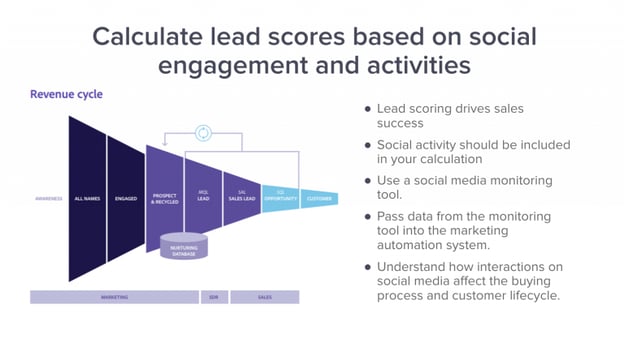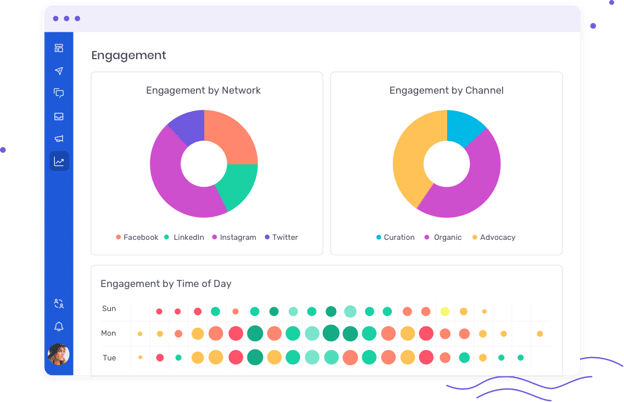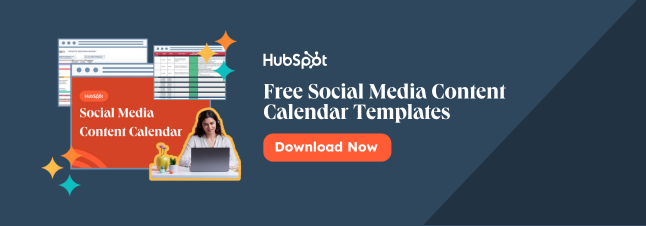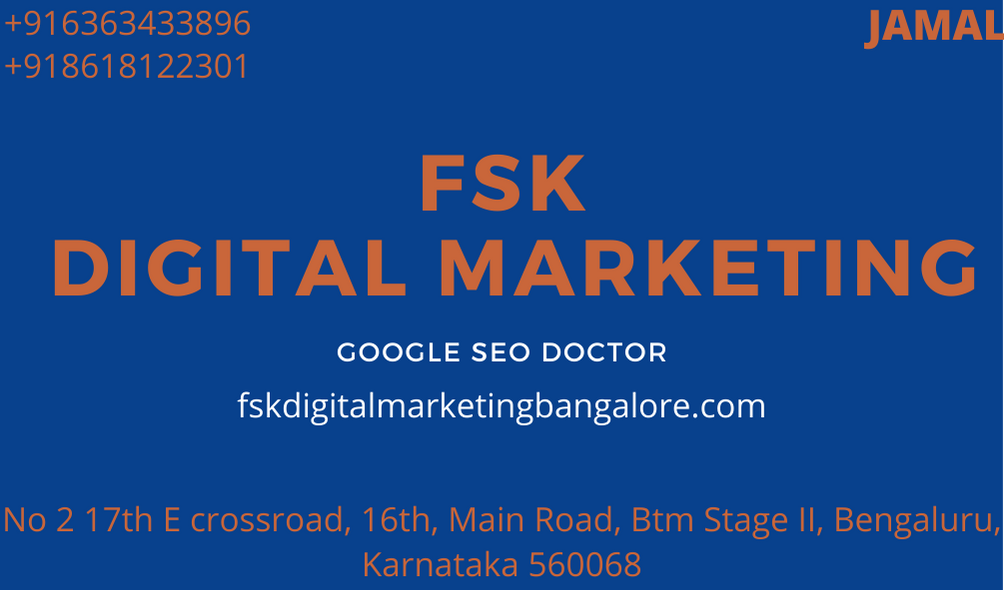For B2B sales and marketing teams, few metaphors are as powerful as the sales funnel.
It's a near-supernatural, multi-layered vortex that pulls in leads from the wider world, then draws them down toward closing. At the top of the funnel (TOFU) are fresh new leads who are just discovering your offerings. In the middle of the funnel (MOFU) are leads who are interested to learn more. Finally, at the bottom of the funnel (BOFU) are those leads who are poised and ready to make a purchase.
Modeling your sales funnel so you can better target and nurture leads at each layer is critical to increasing your conversion rate. But for accurate modeling, you need a lot of reliable data. And one major opportunity for collecting that data lies in your social media tools.
The importance of social media in marketing is unquestionable. In fact, businesses that market on social media are 40% more likely to hit their sales goals. Plus, a whopping 95% of buyers purchase from sellers who provide content that addresses their concerns and questions at each sales funnel level — and, nowadays, a lot of that content is posted on social platforms.
But the question remains: How can you measure and analyze the true impact of social activity on your sales funnel?
Here, we'll explore what social media data is, and how you can use that data to strengthen your B2B sales funnels.
What is social media data?
Social media data (or social analytics — the terms are interchangeable) includes any information gleaned from the activity of visitors, prospects, and leads on your social media channels. Any data you obtain when someone interacts with your profile or content on LinkedIn, Facebook, Instagram, Twitter, or any other social media channel counts as social data.
Specific metrics can vary from platform to platform. However, the following social data points are common to all of them:
- Shares/reposts
- Likes
- Comments
- Mentions
- Impressions
- Conversions
- Clicks
Clicks can be the most revealing of all social data points. Many outside factors can determine what post a visitor might choose to comment on or share. Click metadata can tell you what types of content they would like to explore further.
Why is social media data important to B2B funnels?
You can't analyze the efficiency of your B2B social media marketing efforts without raw data. With so many marketing activities and steps in the buyer's journey taking place on social media, analytics without social data won't yield many useful insights.
With social analytics, you can answer some crucial questions about whether your social media activities can help you meet your goals. Analytics help answer questions such as:
- Which social media platforms are generating the most leads?
- What kind of content is making our audience click, share, and convert the most?
- What are our top-converting posts?
- Are our audiences more interested in engaging with TOFU, MOFU, or BOFU content?
By analyzing the right social data, you can learn what is and isn't working — and then tailor your social media marketing strategy accordingly.
How Social Media Data Impacts Your B2B Funnels
Many aspects of the marketing, sales, and product development processes feed into modeling your sales funnel. The goal is to create a funnel that effectively addresses your buyer's needs and brings them closer to closing a sale. Within this process, there are two critical areas where social data analytics are especially beneficial.
1. Lead Enrichment
Lead enrichment involves supplementing, correcting, and normalizing your data on a lead. The goal is to establish a more in-depth, up-to-date, and accurate picture of who your leads are and what they want. You can automate lead enrichment by importing third-party data into your CRM. You can also accomplish the same outcome by conducting manual research and verification on leads.
Lead enrichment makes it easy to perform several associated functions that will improve your sales funnel's efficiency. These are:
Lead Scoring

How do you know which leads are eager to buy and which ones are just looking? The solution is to quantify their signs of interest, assign them a score, and rank them.
The process of lead enrichment ensures you aren't missing essential information about your lead, such as whether they are a decision-maker at their company. Social data can provide evidence of their signs of interest, as shown through their social media page interactions.
Lead Segmentation
A lead with a low score isn't necessarily one you should ignore. However, a low-scoring lead might need different levels of attention or types of content.
The same goes for leads showing the same level of interest. If they're in different industries or countries, the same approach might not work on all of them.
Social data can enrich your lead profiles with these details. Then you can segment your leads into separate audience groups, which enables you to target each group with custom-made content to address each group's top concerns.
Lead Nurturing
You move a lead from one level of your sales funnel to the next by nurturing them.
Lead nurturing is accomplished by providing leads with content that answers their questions, addresses their concerns, and builds interest in your offers. The more data you have on your leads, the more hints you have about creating content most likely to engage them.
Lead Attribution
It's great when your latest lead steps up engagement within your sales funnel. But if you don't know what motivated them to provide their contact information, download that ebook, or request pricing, you're missing out. That kind of knowledge is vital to improving your sales processes.
Enriched leads and social data analytics strengthen your attribution models. Lead attribution gives you the best chance of finding out which content deserves credit for the conversion.
2. Perfecting Your Messaging
The second key area impacted by social data is your messaging. Ultimately, all of your content is just a form of communication between you and the buyer.
When your messaging is perfect, it strikes the right tone, and speaks to your lead's most pressing concerns — while also entertaining and educating. That's when you know you're putting your best effort into closing the sale.
When your messaging falls short on these fronts, leads can lose interest and drift away.
So, how do you perfect your messaging? The two easiest ways are through personalizing your sales outreach, and creating more engaging content.
Personalize Sales Outreach
Social data can tell you what your leads are most interested in and which channels are best for reaching them. This information allows you to personalize your sales outreach.
Let's look at how this works in practice. Say you have a lead who consistently likes your tweets about a specific function of your product.
From that small piece of data, you can create a personalized outreach. A Twitter DM might be a great way to make a "sales call" — and now you have an even better idea for a good conversation starter.
Create More Engaging Content

Content that engages is critical to move leads toward conversions. But what content should you be making to engage more leads?
First, step back to take a broader view of what your social data is telling you. Measuring how and where your leads engage with your sales funnel allows you to create more engaging content at all levels.
Let's say you're doing well at moving leads through the MOFU and BOFU, but many of them seem to get stuck in the TOFU. The leads who spend the most time in the TOFU aren't converting their way further through the funnel at high enough rates.
Through careful parsing of your social data, you discover that the leads that slowly escape the TOFU heavily engage with your video content. This data tells you that you probably want to have video as a more significant share of your TOFU content.
It's true that collecting, organizing, and analyzing raw social data can be overwhelming at the outset, but having the right resources can take a lot of the difficulty out of this endeavor. Tools like Oktopost can help you automate and optimize your social data processes, making it easy to finetune your content at every level of the sales funnel.
By leveraging social data to create better B2B sales funnel models, you will reap the benefits of its true impact with higher engagement rates, more conversions, and better ROI.
source https://blog.hubspot.com/marketing/social-data-impact-b2b-funnels
![→ Free Download: Social Media Calendar Template [Access Now]](https://no-cache.hubspot.com/cta/default/53/3e56e15d-47bd-46c9-a256-99fde52abfe7.png)









0 Comments